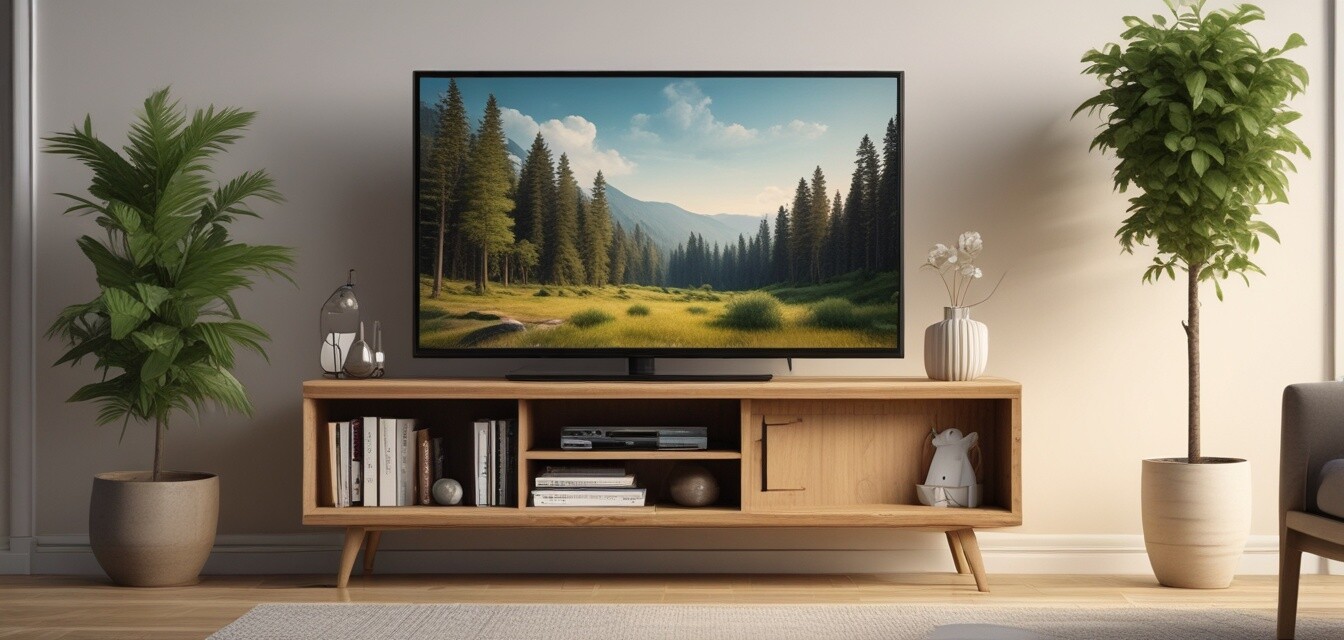
How to Personalize Your Eco-Friendly TV Stand
- Choose sustainable materials for your TV stand.
- Incorporate personal décor elements that reflect your style.
- Use functionality to enhance your space without compromising aesthetics.
- Consider DIY projects for a unique touch.
- Balance eco-friendliness with your home décor theme.
When choosing an eco-friendly TV stand, personalization is key to making it feel like part of your home. With various styles and sustainable materials available, there are countless ways to complement your existing décor. In this guide, we’ll explore practical tips for adding personal touches to your eco-friendly TV stand, ensuring it aligns with both your aesthetic preferences and eco-conscious values.
Choosing the Right Materials
The first step in personalizing your eco-friendly TV stand is to choose the right materials. Here's a breakdown of some popular sustainable materials:
| Material | Characteristics | Eco-Friendly Benefits |
|---|---|---|
| Reclaimed Wood | Unique grain patterns, durable | Reduces waste, supports sustainable forestry |
| Bamboo | Lightweight, strong | Fast-growing plant, low environmental impact |
| Recycled Metal | Modern look, sturdy | Reduces resource extraction, lowers waste |
| Composite Materials | Versatile, can mimic wood | Utilizes waste products, can be made from recycled content |
Incorporating Personal Elements
Your TV stand is not just a functional piece but an opportunity to showcase your personality. Here are some tips on how to incorporate personal elements:
- Artwork: Hang or place artwork that speaks to you above or next to your TV stand.
- Photographs: Frame personal photographs that bring warmth and nostalgia.
- Plants: Use plants to add a touch of nature; succulents or small pots can fit well.
- Books: Organize books or magazines that reflect your interests on the shelf.
Functional Personalization
Make your eco-friendly TV stand work for you by integrating functionality into your personalization efforts. Here are some ideas:
- Multi-Use Space: Use the stand for storing games, controllers, and media in an organized way.
- Smart Storage: Select a TV stand with built-in shelving or cabinets that suit your storage needs.
- Tech Integration: Look for features that allow easy access to tech setups without compromising aesthetics.
DIY Personal Touches
If you have the creative knack, consider DIY projects to personalize your eco-friendly TV stand. Here are a few ideas you can try:
- Upcycling: Transform old furniture pieces into unique parts of your TV stand.
- Custom Painting: Add your personal flair by painting the stand in colors that match your décor.
- Decorative Hardware: Replace standard knobs and handles with unique, themed ones to enhance visual appeal.
Balancing Eco-Friendliness and Design
When personalizing your TV stand, always keep a balance between sustainability and style. For more tips on eco-friendly living, check our guide on eco-friendly living.
Conclusion
Personalizing your eco-friendly TV stand allows you to showcase your individuality while being mindful of the environment. By selecting sustainable materials and incorporating personal elements, you can create a unique focal point in your home. Remember to balance functionality and aesthetics to ensure your stand works as hard as it looks.
Beginners' Section
If you're new to personalizing furniture, start small! Here are a few quick tips:
- Choose one or two decorative elements to start with.
- Keep a color palette that matches your existing decor.
- Experiment with layout before finalizing your arrangement.
Pros
- Eco-friendly materials reduce environmental impact.
- Personalized décor adds warmth to your living space.
- Functional designs enhance user experience.
Cons
- Customization may require time and effort.
- Some materials can be pricier than conventional options.